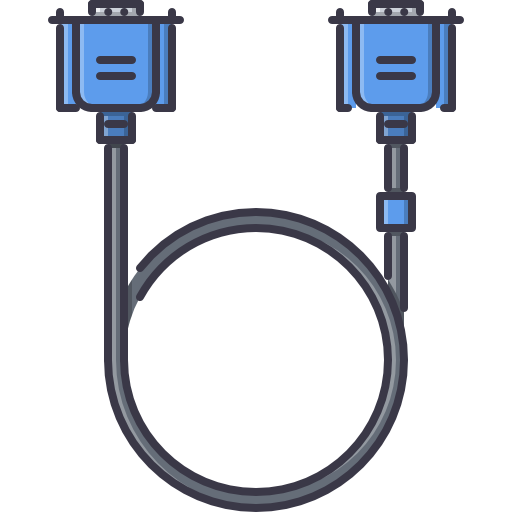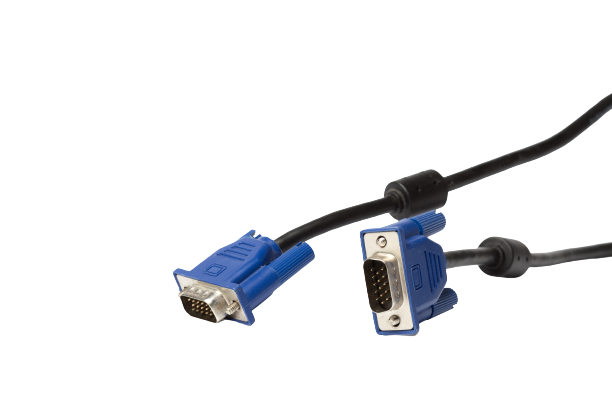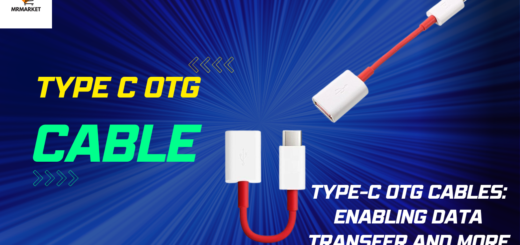VGA CABLE: Enhancing Visual Connectivity for Superior Display

As a result of ongoing technological advancements, multimedia experiences are becoming an essential aspect of our lives in today’s fast paced society. Reliable video transmission is essential for presentations, streaming and gaming. Because they provide excellent video quality and are compatible with a variety of devices, VGA cables have been a mainstay in the world of visual connectivity for decades.
In this article, we’ll delve deeper into the world of Video Graphics Array cables, exploring their features, benefits, and applications. From understanding how VGA cables work to highlighting their advantages over other video cables, we’ll provide valuable insight that will help you make informed decisions when it comes to visual connections.
Table of Contents
VGA CABLE: the Basics
Let’s start by understanding the fundamentals of VGA CABLEs:
What is VGA CABLE?
VGA is the acronym for Video Graphics Array. It’s used to send video signals from a computer or laptop to a monitor or projector. Video Graphics Array CABLEs are specifically designed to facilitate this video transmission, ensuring high-quality visuals.
How Does VGA CABLE Work?
Video Graphics Array CABLEs operate by transmitting analog video signals. These cables use a 15-pin connector that carries red, green, blue, horizontal sync, and vertical sync signals. When connected between a compatible video output and display device, the Video Graphics Array CABLE enables the transfer of video information, resulting in a crisp and clear display.

Advantages of VGA CABLEs
VGA CABLEs offer a range of benefits that have contributed to their enduring popularity. Let’s explore some of the advantages they bring to the table:
1. Wide Compatibility
One of the significant advantages of Video Graphics Array CABLEs is their widespread compatibility. Video Graphics Array ports are commonly found on computers and laptops, as well as on monitors and projectors. This allows users to easily connect multiple devices without having to worry about compatibility problems.
2. Cost-Effective Solution
Video Graphics Array CABLEs are an affordable and cost-effective option for video transmission. Compared to some of the newer digital interfaces, Video Graphics Array CABLEs provide excellent video quality without breaking the bank.
3. Reliable Performance
When it comes to stability and reliability, Video Graphics Array CABLEs have a proven track record. These cables are known for delivering consistent video signals, reducing the chances of signal loss or interference.
4. Easy to Use
Video Graphics Array CABLEs are user-friendly, making them accessible even to those with limited technical knowledge. The plug-and-play nature of VGA CABLEs allows for a hassle-free setup, ensuring a seamless video transmission experience.
5. Decent Video Quality
While Video Graphics Array CABLEs are analog, they still offer decent video quality, especially for lower resolution displays. For day-to-day computing tasks, presentations, or general multimedia usage, Video Graphics Array CABLEs deliver satisfactory visual performance.
6. Legacy Device Support
With VGA being around for so long, a lot of old-school devices still use VGA cables to record video.Having VGA connectivity ensures that you can connect and use older devices without any issues.

The Evolution:
VGA CABLE vs. Modern Alternatives
While Video Graphics Array CABLEs have been the go-to solution for video transmission for several years, modern alternatives have emerged, each with its unique features and benefits. Let’s compare Video Graphics ArrayCABLEs with some of the popular modern options:
VGA CABLE vs. HDMI CABLE
Video Graphics Array CABLEs and HDMI CABLEs are both widely used for video transmission, but they have some key differences. HDMI Cables are digital and have higher resolution, so they’re great for HD screens and multimedia stuff. But Video Graphics Array Cables are still the way to go if you have an older device or if you don’t have an HDMI port.
VGA CABLE vs. DisplayPort CABLE
DisplayPort CABLEs are another digital alternative to VGA, known for their high bandwidth and ability to support multiple displays. They are commonly used in gaming setups and graphics-intensive tasks. However, Video Graphics Array CABLEs remain relevant for specific applications, particularly when connecting to older monitors or projectors.
VGA CABLE vs. DVI CABLE
DVI (Digital Visual Interface) CABLEs are similar toVideo Graphics ArrayCABLEs in terms of video quality but offer a digital connectionOlder PCs and monitors frequently include them. Like Video Graphics Array CABLEs, DVI CABLEs have a wide compatibility range but lack the ability to carry audio signals.
Conclusion: Embracing the Timeless VGA CABLE
In conclusion, Video Graphics Array CABLEs have been a reliable and widely used solution for video transmission for many years. While modern alternatives have emerged, Video Graphics Array CABLEs continue to hold their own, especially in scenarios where legacy devices and connections are involved.
Whether you’re connecting a computer to a projector for a presentation or using an older monitor with limited connectivity options, VGA CABLEs offer a straightforward and dependable way to enhance visual connectivity. So, next time you’re looking for a reliable and affordable video cable, don’t forget about the reliable VGA cable
Here is the best 5 aux cable according to customer review on amazon





READ MORE — Type C Cable: The Versatile and Efficient Solution for Modern Devices













